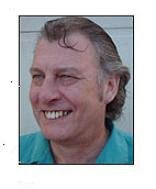 I really like art. I enjoy visiting galleries. I enjoy experiencing art.
I really like art. I enjoy visiting galleries. I enjoy experiencing art.I enjoy a good chinwag about art. I enjoy hanging out with artists and visiting their studios to talk about projects in progress.
I enjoy watching well-made TV documentaries about art and artists.
I can't draw but I can paint large surfaces -- walls and murals -- and I can paint miniatures. And I've made objects and sculptures.
When at college I situated my creative writing desk in a sculpture studio.
I've come to understand the fundamental relationship between poetry, sculpture and dance and architecture.
Some of my very best friends, like Stephen, are serious, accomplished artists.
I enjoy reading about art, though I don't do enough of it.
Thinking about it I really should get my act together and write about art.
In my novel After Goya I describe two fictitious miniature paintings by Goya and two miniatures created as pastiches of Goya. I gave the passages to Xavier Peralta, the book's designer, to read. I was taken aback and pleased by his response. He at first refused to believe the Goyas I'd painstakingly described do not exist.
Such would not have been possible had I not come across Peter and Linda Murray's
A Dictionary of Art & Artists right back in the early 70s.
Ironically A Dictionary of Art & Artists does not contain any illustrations, so, as you flick through the book, unless you have an exhibition catalogue or other images to hand, you are required to imagine the works or techniques being referenced -- good exercise for developing creative writing visualisation muscles.
And who can read an entry (chosen at random) like this:
FRANCIS, Sam (b.1923), is a Californian Tachiste painter. He served in the US Air Force 1943-45, and, after a long spell in hospital, became an abstract painter in 1947. In 1950 he went to Paris, joining the circle of American painters around RIOPELLE. He has painted murals for the Kunsthalle, Basle (1956-8) and, on a visit to Japan in 1957, for a School of Flower Arrangment there. His technique of dribbling paint differs from the more 'calligraphic' style used by many Americans. There are paintings by him in London (Tate) and New York (MoMA)
and not imagine all sorts of potential story threads?
A sharp-eyed art historian or contemporary art commentator will note I need a new edition -- Sam Francis died in 1994.
A Dictionary of Art & Artists is an invaluable first reference and an excellent source of inspiration for creative writers.
And, if the above entry made you curious, here's an image of one of Sam Francis's works:

(Click on the image to view a larger version.)




No comments:
Post a Comment